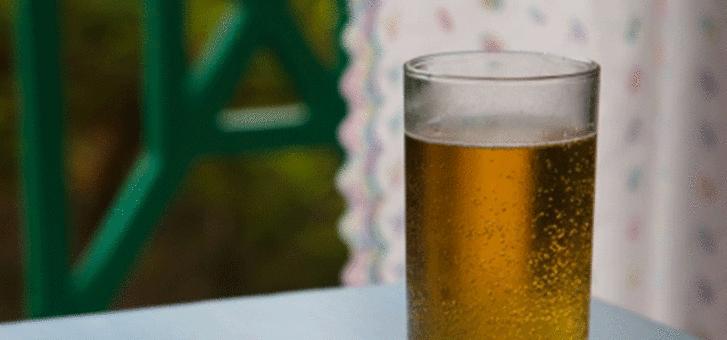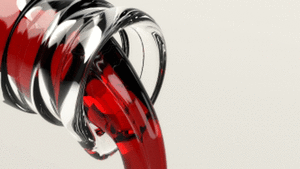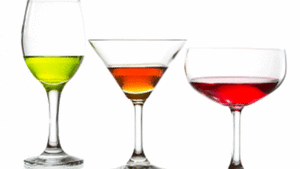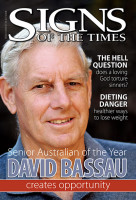Something of a seismic shift occurred in Australia during February and March 2008, yet the change appears to have attracted little attention.
In this time period, prime minister Kevin Rudd announced that teenage binge drinking was reaching “epidemic” proportions, and the Government was funding a massive program to address the issue.
The seismic shift isn’t that binge drinking is common in Australia; this has been part of Australian society since the arrival of the First Fleet in 1788.
Just three days after landing on January 26, a convict was punished for drunkenness.
On February 6, the day the female convicts landed, the men broke into the rum stores and embarked on a drunken orgy of such magnitude the officials were unable to contain it. Only a spectacularly violent thunderstorm brought it to an end.
Alcohol continued to be central to Australia’s social—and economic—fabric.
In the late 1700s, rum became a de facto currency, and employers found it was virtually the only form of pay that could motivate the reluctant convicts to work. The New South Wales Corps— the military unit charged with policing and protecting the infant colony— became so enmeshed in a rum trade monopoly, often at grossly inflated prices, they later earned the nickname “the Rum Corps.” Some historians believe the rebellion of the NSW Corps against Governor Bligh on January 26, 1808, was partly motivated by Bligh’s attempts to reduce alcohol imports and break the Rum Corps’ liquor monopoly.
Even after the sober Governor Macquarie regulated the liquor trade, he was forced to resort to a rum monopoly to raise the funds to build the new Sydney Hospital—the northern wing of which is now the NSW State Parliament building, a testament to the influence of alcohol in Australian society.
In the mid-1800s, binge drinking was a regular feature among bush workers, who could only redeem their note of payment at the local pub. So bush workers would have a couple of weeks of continuous drinking, returning to work only when they had exhausted their credit. Such an arrangement suited both publican and squatter.
Alcohol has retained an honoured place in Australian society, associated with most social events and major sporting codes. Getting drunk is still a rite of passage for many young males, and university socials organised by student unions often consist of little more than pub crawls. A study of young people aged 16– 24 in Victoria in 2002 found that 40 per cent were drinking excessively, often on a weekly basis.
Crossing the Tasman doesn’t make any difference: New Zealand’s alcohol history starts with Captain Cook’s men brewing manuka beer in 1773, and parallels Australia’s track record.
Nor is the seismic shift the fact that governments and other organisations have condemned drunkenness. From the very start, Australian and New Zealand authorities have sought ways to combat what they considered a major social evil. The early governors attempted to regulate the rum trade, in the face of opposition from convicts who demanded it and officers who profited from it. However, later governments, with more effective military and police support, had more success in limiting public access to alcohol.
Licensing laws governed its sale, and restrictions were brought in controlling opening hours and legal drinking age.
A variety of laws have been passed on both sides of the Tasman in an attempt to reduce the abuse of alcohol. Canberra was officially dry from 1910, after US-style laws were promoted by the flamboyantly eccentric American-born politician King O’Malley. The law was repealed when Parliament moved there from Melbourne in 1927. At the instigation of women’s temperance groups, New South Wales introduced 6 pm closing in 1915, forcing pubs to close for an hour each evening to encourage men to go home for dinner. The law was rescinded in 1955, having done more harm than good. As with Prohibition in the USA, the law accidentally promoted “sly grog,” from which organised crime made big profits.
Churches have also regularly led the fight against alcohol. In particular, Methodists, Seventh-day Adventists and many Presbyterians campaigned in favour of temperance issues, and the Salvation Army made a feature of its work with alcoholics. Christian groups founded temperance unions, often campaigning effectively for political action against alcohol. They formed perhaps unlikely alliances with women’s suffrage groups and elements of the trade union movement and Labor Party, which saw liquor as an evil monopolised by capitalist interests that had its worst impact on poor working families and wives.
Of course, a society steeped in alcohol tends to generate a small but aggressively vocal anti-drink lobby, which in turn is condemned by the majority. In Australia and New Zealand, the obsolete term “wowser,” referring to any kind of moral policing but especially to anti-drink campaigners, was one of the worst social insults possible. As many non-drinkers can testify, any man who admits to being a non-drinker can face quite a hostile reception from men around him, who fear the presence of a “wowser” who will judge them.
But the fact that the alcohol lobby has been relatively quiet over Rudd’s attack on alcohol abuse indicates a possible shift in Australian attitudes toward the issue. The media has produced a flood of articles highlighting the seriousness of alcoholism, featuring not just teen abuse but also abuse among the general population, such as the problem of hidden alcoholism among affluent suburban housewives.
Perhaps for the first time, our society is prepared to discuss the issue of alcohol abuse openly, without it being dominated either by the “wowsers” or the alcohol lobby. Such a development would be welcome, showing our society has achieved a new level of maturity, able to discuss a contentious issue without resorting to verbal abuse or stereotyping.
Rudd’s plan allocates considerable funding to an education program to make young people aware of the impact of binge drinking. Such a campaign will be a valuable part of the solution.
However, education alone will make relatively little difference, as education campaigns against smoking and illicit drugs indicate. English singer Michelle Heaton’s documentary, The truth about binge drinking, highlights the fact that for many, knowledge alone does not change behaviour.
As most behaviour-change experts indicate, our behaviour is influenced more by our relationships than by our knowledge. Young people are most likely to modify their drinking patterns when they are influenced by the significant people in their lives: teachers, social leaders, sporting heroes, peers and family. In particular, parents play a highly influential role in the attitudes and values of teens. Mums and dads who maintain open communication and involvement with their children are often the best placed to shape the behaviour of teens.
Having advanced to a society that can openly discuss the problem of alcohol abuse, the challenge is now to go a step further in maturity and recognise that addressing the issue successfully will depend more on our own actions than on the actions of governments, schools, churches or even the media.






